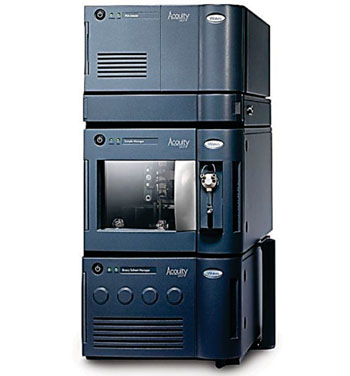Diabetic Risk in Obesity Delineated by Metabolic Status
By LabMedica International staff writers
Posted on 11 Nov 2015
The simple anthropometric measure of body mass index does not always reflect the biological effects of excessive body fat on health, thus additional molecular characterizations of obese phenotypes are needed to assess the risk of developing subsequent metabolic conditions at an individual level.Posted on 11 Nov 2015
A panel of markers has been discovered that helps identify if a person is pre-diabetic by measuring the fatty acids in their blood and this discovery may allow physicians to warn their patients years before the onset of diabetes, therefore allowing them to change their lifestyle patterns potentially avoiding the diagnosis of a chronic disease.

Image: The ACQUITY Ultra Performance Liquid Chromatography System (Photo courtesy of Waters Corporation).
Scientists at the University of Hawaii Cancer Center (Honolulu, HI, USA) working with colleagues in China carried out four independent studies that included 312 subjects in the cohort, 132 healthy subjects were normal weight, 107 subjects were either overweight or obese, and 73 subjects had been diagnosed with type 2 diabetes (T2D) complicated with hypertension, high cholesterol or hypertriglyceridemia. They also selected 62 subjects who were overweight/obese and metabolically healthy at baseline, of which, 50 became unhealthy overweight/obese and 12 remained healthy overweight/obese after ten years. Another cohort was from a metabolic surgery intervention study of 40 obese patients with T2D and 53 obese metabolically healthy volunteers.
Serum samples from the four studies were processed and analyzed using the same protocol. The samples were analyzed using Ultra Performance Liquid Chromatography coupled to a hybrid quadrupole orthogonal time of flight mass spectrometer (UPLC-QTOF-MS), (Waters Corporation; Milford, MA, USA). In the cross-sectional study, comprising 132 normal-weight (NW), 107 healthy overweight/obese subjects (HO), and 73 overweight/obese subjects diagnosed with T2D, the team observed that there were significant differences among the three groups according to body mass index (BMI) and key metabolic markers. Two unsaturated fatty acids, dihomo-gamma-linolenic acid and palmitoleic acid, were shown to predict acquisition of diabetes and also evaluate diabetes remission post-metabolic surgery.
Weiping Jia, PhD, a professor and senior author of the study said, “Currently there are no clinical tests that tell you the likelihood of developing diabetes, only exams that tell you for example if someone that is pre-diabetic has relatively high blood sugar or insulin levels. To know if you are likely to get diabetes in a few years is an important discovery. People can hopefully get tested for the disease during physical exams in the future.” The study was published on October 6, 2015, in the journal EbioMedicine.
Related Links:
University of Hawaii Cancer Center
Waters Corporation













